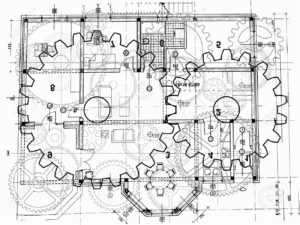Backed by Research
Proven by Practice

An old concept made easy to implement
Daily math practice is not a new concept. It has been part of classrooms for decades and has proven effective over time. While Formative Loop takes a unique digital approach to make running a daily individualized program easy, we built upon that existing methodology in designing much of our program. Digital programs are excellent additions to the classroom, but we believe strongly in the benefits of pencil-paper practice (read our blog post). Our program uses technology where it fits best in managing the program while providing students the mechanical practice of number formation and showing their work on paper.

White Paper - Efficacy of Formative Loop Numeracy
This case study provides a detailed analysis of implementing Formative Loop and the resulting impact on students.

Research
When building Formative Loop, there were several papers from which we drew insights. They support the individualized learning design of Formative Loop, the sequence of our problems, and the content of our exercises. They also show the ways learning is enhanced when using pencil-paper vs. digital systems. Below is a list of papers we drew heavily from.
Baroody, A.J. (2003). The development of adaptive expertise and flexibility: The integration of conceptual and procedural knowledge. In A. J. Baroody & A. Dowker (Eds.), The development of arithmetic concepts and skills: Constructing adaptive expertise studies (pp. 1-34), Mahwah, NJ: Erlbaum.
Burns, M.K., Ysseldyke, J., Nelson, P. M., & Kanive, R. (2015). Number of repetitions required to retain single-digit multiplication math facts for elementary students. School Psychology Q. 30(3), 398-405.
Ferrari, M., Sternberg, R. J. (1998). The development of mental abilities and styles. In W. Damon (Ed.), Handbook of child psychology: Child psychology and practice (5th ed., Vol 2, pp. 899-946), New York: Wiley.
Hawkins, R. O., Collins, T., Hernan, C., & Flowers, E. (2017). Using Computer-Assisted Instruction to Build Math Fluency Intervention in School and Clinic. 52(3) 141-147.
Geary, D. C. (2011). Cognitive predictors of achievement growth in mathematics: A 5-year longitudinal study. Developmental Psychology, 47(6), 2539-1552.
Isaacs, A., & Carroll, W. (1999). Strategies for basic fact instruction. Teaching Children Mathematics, 5(9), 508–515.
Kling, G., & J. M. Bay-Williams (2015). “Three Steps to Mastering Multiplication Facts.” Teaching Children Mathematics, vol. 21, no. 9, p. 548.
Musti-Rao, S., Lynch, T. L., & Plati, E. (2015). Traning for Fluency and Generalization of Math Facts Using Technology. Intervention in School and Clinic, 51(2), 112-117.
Nelson, P.M., Parker, D. C., & Zaslofsky, A. F. (2016). The Relative Value of Growth in Math Fact Skills Across Late Elementary and Middle School Assessment for Effective Intervention. 41(3) 184-192.
Steel, S. & Funnell, E. (2001). Learning multiplication facts: A study of children taught by discovery methods in England. Journal of Experimental Child Psychology, 79(1), 37–55.
Wong, M., & Evans, D. (2007). Improving basic multiplication fact recall for primary school students. Mathematics Education Research Journal, 19(1), 89–106.
Mueller, P., & Oppenheimer, D. (2014). The Pen Is Mightier Than the Keyboard. DOI: https://doi.org/10.1177/0956797614524581
Woodward, J. (2006). Developing automaticity in multiplication facts: Integrating strategy instruction with timed practice drills. Learning Disability Quarterly, 29, 269–289.